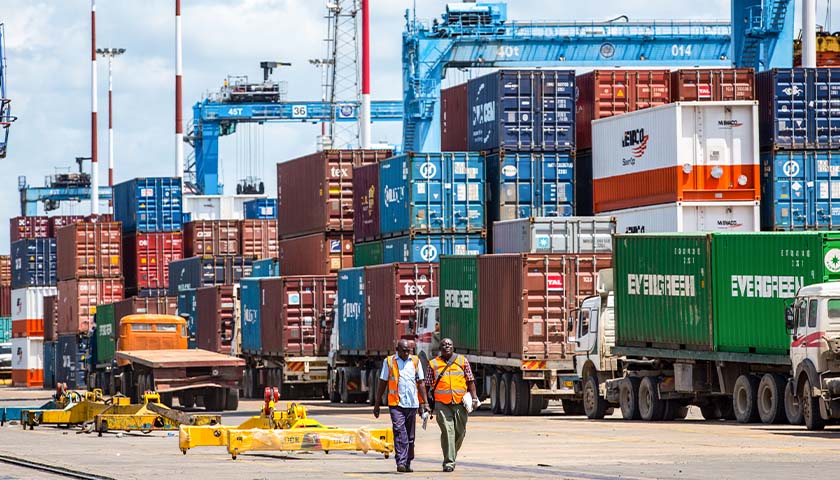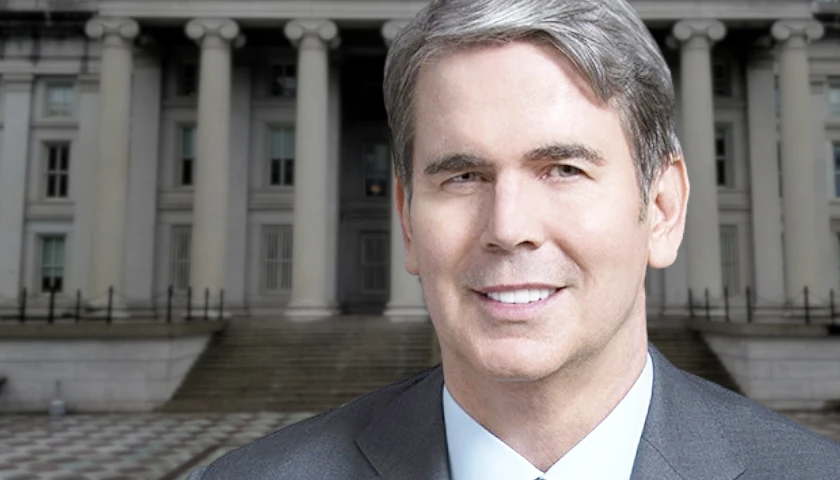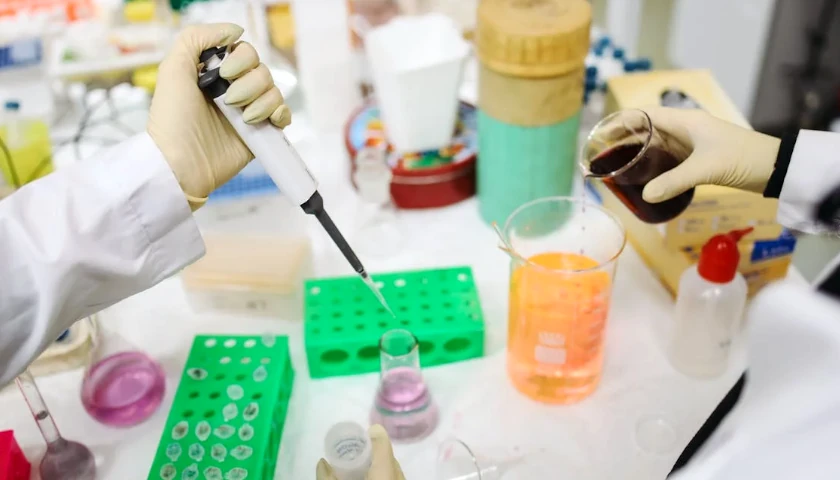by Jeff Webb
During the latter part of the 20th Century, Americans became accustomed to hearing stories of shortages of basic items in the Soviet Union. The metaphor of “waiting in line for bread” came to signify anything where a state-managed effort led to the inefficient and ineffective distribution of consumer goods and services. The state-generated supply chain problems were the butt of jokes for comedians everywhere.
Well, “bread lines” have now officially arrived in America and nobody is laughing. The middle class and the poor have especially lost their sense of humor over the supply chain disruptions that have led to shortages and higher prices being found everywhere from the grocery store shelves to the provision of medical supplies. Nothing is funny about shelves, wallets, and medicine cabinets all emptying out simultaneously.
Supply issues with gasoline are also a major problem. According to AAA, the average price for a gallon of regular unleaded gasoline today is $3.30. A year ago, at this time that average price was $2.18. Thank you, President Biden for cancelling the Keystone Pipeline and for suspending oil & gas leases in Alaska.
Supply chain problems have been in the news almost since the start of the COVID-19 pandemic. At first, we experienced shortages of everything from cleaning materials to toilet paper as people began stocking up out of fear. That issue related to panic-driven hoarding. It was not a supply chain issue; it was a supply and demand issue. There just wasn’t enough stuff on hand to accommodate sudden frenzied buying.
The supply chain problems developed next as workers in the US and elsewhere began to get sick or were locked out of work due to pandemic restrictions. The trendy phrase of “farm to table” got lengthened by many syllables as processes broke down and shortages of necessary components for virtually everything, not just dinner, became prevalent.
While the news is showing people pictures of container-carrying ocean freighters backed up outside of California ports like rush hour traffic on the 405, the average person doesn’t necessarily understand what supply chains really are, nor do they understand just how intricate, complex, and sensitive they are to even the smallest disruption. If ever the “butterfly effect” can be felt, it is in the case of supply chains.
While the idea of supply chain is often associated with manufacturing and the required parts needed to assemble something, the concept is much broader and simpler than that. Simply put, the supply chain (think visually of an actual linked chain) is every part of the process that gets what is needed to arrive at its final destination. That final destination is different for every participant in the economic product or service life cycle.
The Nobel Prize winning economist and champion of free enterprise, Milton Friedman, used to famously refer to the short, fable-like story known as “I, Pencil” written by Leonard Read and published in 1958. In that clever piece, Read traces the family tree of a typical wooden pencil. He mentions all the raw material required, the parts of the world from which they are mined or harvested, and how they are assembled. His point, which Freidman took to a much higher level, was that no one person in the world could make, or knew how to make, a pencil. Only a free marketplace could get all of the necessary components delivered to the final manufacturing point.
Wood, metal, graphite, the harvesting and refining of those items, the shipments of the various parts, and so on, are all part of the supply chain. For the pencil manufacturing company, the supply chain end point is the one at which all of the components necessary to make that pencil arrive. For the consumer who wants to buy a pencil, the supply chain ends when the pencil is placed on the store shelf for their purchase.
Use your imagination and you can instantly see how complex this is even for something as basic as a wooden pencil. Now, extend that to millions of products needed all over the world to produce necessities like food, gasoline, and appliances. Further complicate with the fact that the components for all of them come from all different parts of the world. The complexity is overwhelming. How, might you ask, can anyone figure out how to solve these problems.
The answer is that they can’t. The point Read was making and the point that Freidman rode to fame was that no central planner, no bureaucracy, no star chamber, no politician, can figure out how to choreograph a supply chain. It defies central design. It needs to be developed by individual participants in the marketplace, each acting in their own self-interest, and each finding a way to get that pencil to the shelf without ever necessarily envisioning a pencil.
Said differently, government can’t make pencils and it can’t stock shelves with bread. It can only cause people to wear out pencils filling out forms and create lines of people waiting for bread. Transportation Secretary Pete Buttigieg says that this supply chain problem could last for “years and years.” Years and years? We’ll starve! Buttigieg personifies the general level of incompetency throughout the Biden administration. The last thing we need to do is to deploy that incompetency to solve supply chain problems.
The Biden administration announced this week that they we are reauthorizing the Port of Los Angeles to go to 24/7 hours of operation. In making the announcement, President Biden said:
Today’s announcement has the potential to be a game changer. I say potential because all of these goods won’t move by themselves. For the positive impact to be felt all across the country, and by all of you at home, we need major retailers who order the goods and the freight movers who take the goods from ships to factories and to stores to step up as well.
Thank you, Comrade Biden. Here’s a question: Why weren’t the hours of the Port of Los Angeles already authorized to be 24/7? What business does government have inserting itself into the world of shipping? The President would likely argue it concerns matters of security. But security needs to be built around the operations of markets, not the other way around. Government’s job is to protect us in the course of living our lives, not to force us to alter our lives to accommodate their protection.
One of the big problems that has been created for our country as a result of the pandemic is that now more than ever Americans are looking toward government, especially the federal government, to solve every problem. A new Rasmussen Poll released Thursday and reported in Human Events indicated that 65% of Americans think the federal government needs to step up to solve the problem.
The fallacy here, and the irony, is that the federal government can’t solve a problem that it created in the first place. The combination of burdensome regulations over economic activity that existed before the pandemic (and which I addressed in my book, American Restoration-How to unshackle the great middle class), coupled with the new pandemic-related measures (including vaccine mandates) have disrupted virtually every supply chain at every level.
The people who pay for this are the people who can least afford to pay for it. As I constantly point out, it is the middle class and those aspiring to reach middle class status who suffer the most from government’s excesses and inefficiencies. In this case, those people are experiencing things they need being harder to find and they are having to pay more for them when they do find them.
It is fair to ask what my solution would be for the supply chain problem? My answer is that I don’t have one and neither does anybody else. There is no one answer because there are nearly an infinite number of problems to solve. I do know what the solution isn’t. The solution isn’t to have government try to come in and centrally manage the supply chain problem. Government needs to get out of the way.
America needs pencils. I need a pencil. I just pressed so hard writing this out of frustration that mine broke. I’d ask our central-planning President what to do about it, but I doubt he’d be allowed to answer my question.
– – –
Jeff Webb is co-publisher and executive news editor for Human Events.




